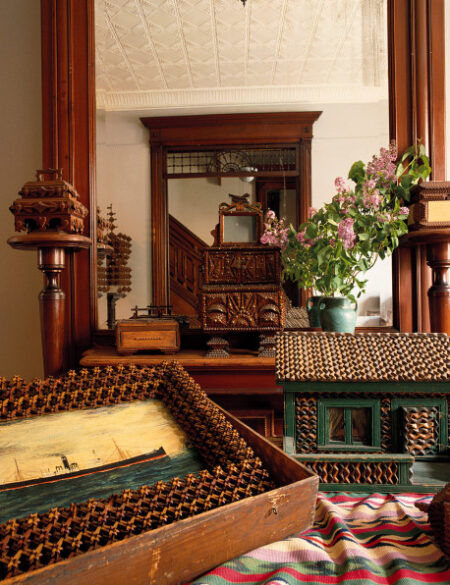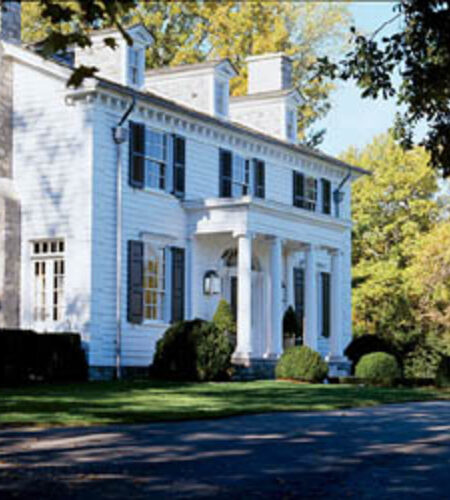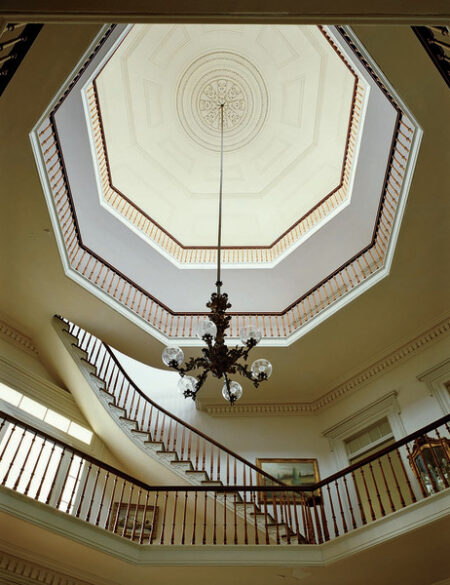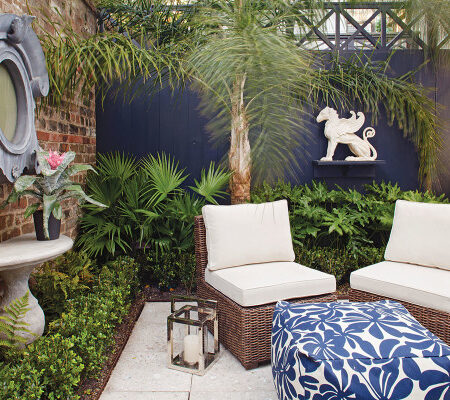This content was originally published on OldHouseOnline.com and has been republished here as part of a merger between our two businesses. All copy is presented here as it originally appeared there.

Fanciful is one way to describe this house, where Arts & Crafts-era features like oversize brackets and corbels, a chalet roof, and transomed Glasgow windows are joined by such Moresque details as the entry arch, framed window, and tile-work. Owners Cynthia and Allen Koster have preserved the historic fabric inside and out and have furnished the house tastefully with collections from different periods.
The dining room has an American A&C aesthetic, while the entry, living room, and white stair hall allude to Charles Rennie Mackintosh, the proto-Modern Scots designer. The hall sets the theme of the Kosters’ collecting: The couple created a three-dimensional frieze of Art Deco teapots and pitchers manufactured by the Hall Pottery Company of Ohio. It runs around the entry and dining room. “Collections can become a little obsessive,“ confesses Allen. “Especially the Hall china: 125 pieces!“
6






Gallery6 Images
Furniture in the house is in keeping with a historical Arts & Crafts sense; the dining room table and chairs, for example, blend with the original clear-finished woodwork. But the Kosters have transcended period design-by-rote. “The front hall is an eclectic collection,“ Allen acknowledges, “but our preferences seem consistent and work well together.“

Finding the appropriate lighting was a challenge. In the hall, a slipper-shade Art Deco hanging fixture is close enough to the ceiling to hide bulbs from someone on the stairs. The Kosters have collected such fixtures from as far away as Australia, and had them rebuilt to accept U.S. sockets.
Color is carried upstairs, with muted hues on the walls and floors, sharply offset by bright splashes from framed prints. More of the pottery collection appears here as well. “The 1930s pottery is bright, which meant the palette overall had to be paler,“ says the owner-architect. The house does not seek to re-create a moment in history. The robust and historic first floor is coherent with the more contemporary second level.









